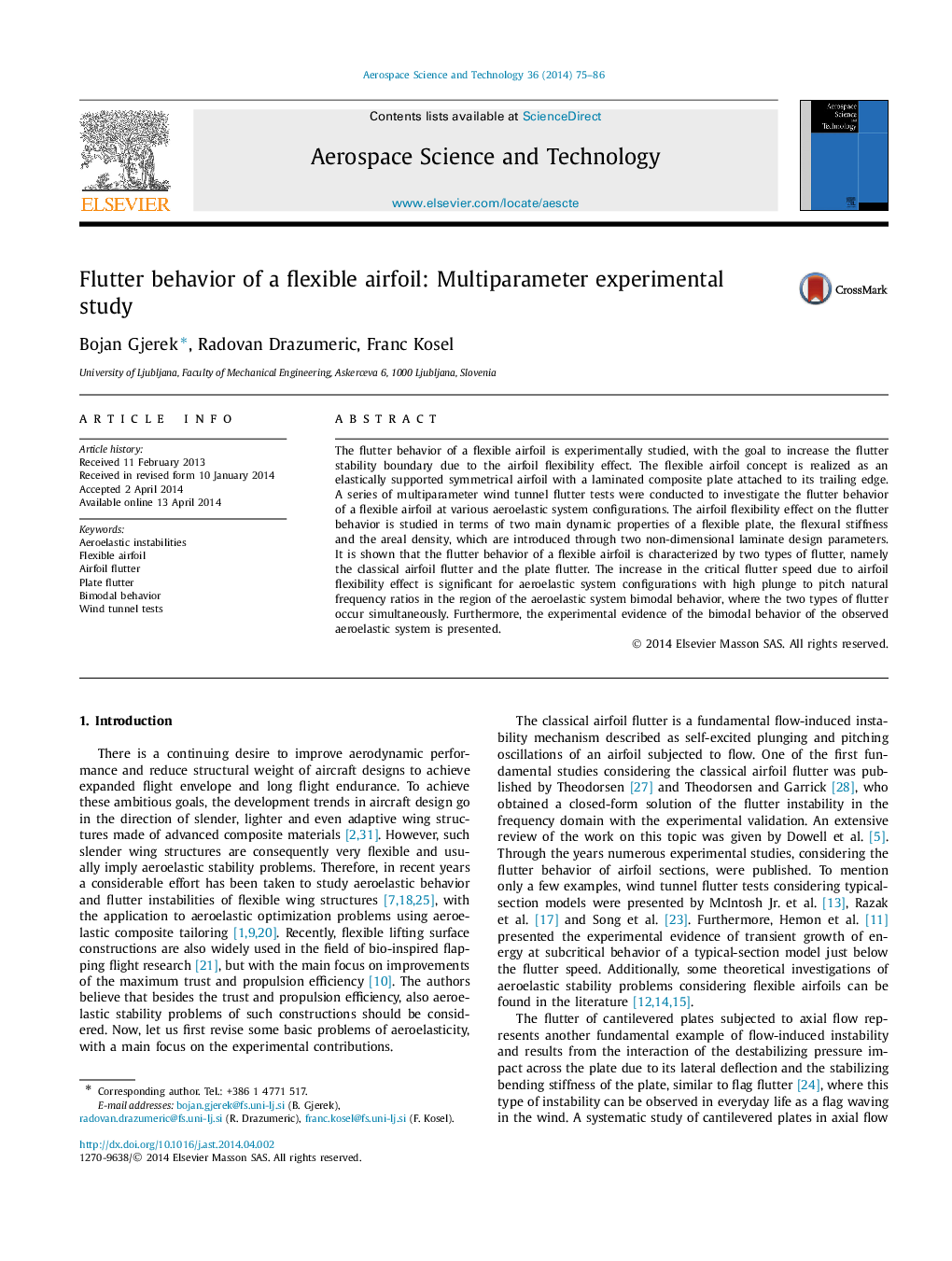| Article ID | Journal | Published Year | Pages | File Type |
|---|---|---|---|---|
| 1718068 | Aerospace Science and Technology | 2014 | 12 Pages |
The flutter behavior of a flexible airfoil is experimentally studied, with the goal to increase the flutter stability boundary due to the airfoil flexibility effect. The flexible airfoil concept is realized as an elastically supported symmetrical airfoil with a laminated composite plate attached to its trailing edge. A series of multiparameter wind tunnel flutter tests were conducted to investigate the flutter behavior of a flexible airfoil at various aeroelastic system configurations. The airfoil flexibility effect on the flutter behavior is studied in terms of two main dynamic properties of a flexible plate, the flexural stiffness and the areal density, which are introduced through two non-dimensional laminate design parameters. It is shown that the flutter behavior of a flexible airfoil is characterized by two types of flutter, namely the classical airfoil flutter and the plate flutter. The increase in the critical flutter speed due to airfoil flexibility effect is significant for aeroelastic system configurations with high plunge to pitch natural frequency ratios in the region of the aeroelastic system bimodal behavior, where the two types of flutter occur simultaneously. Furthermore, the experimental evidence of the bimodal behavior of the observed aeroelastic system is presented.
